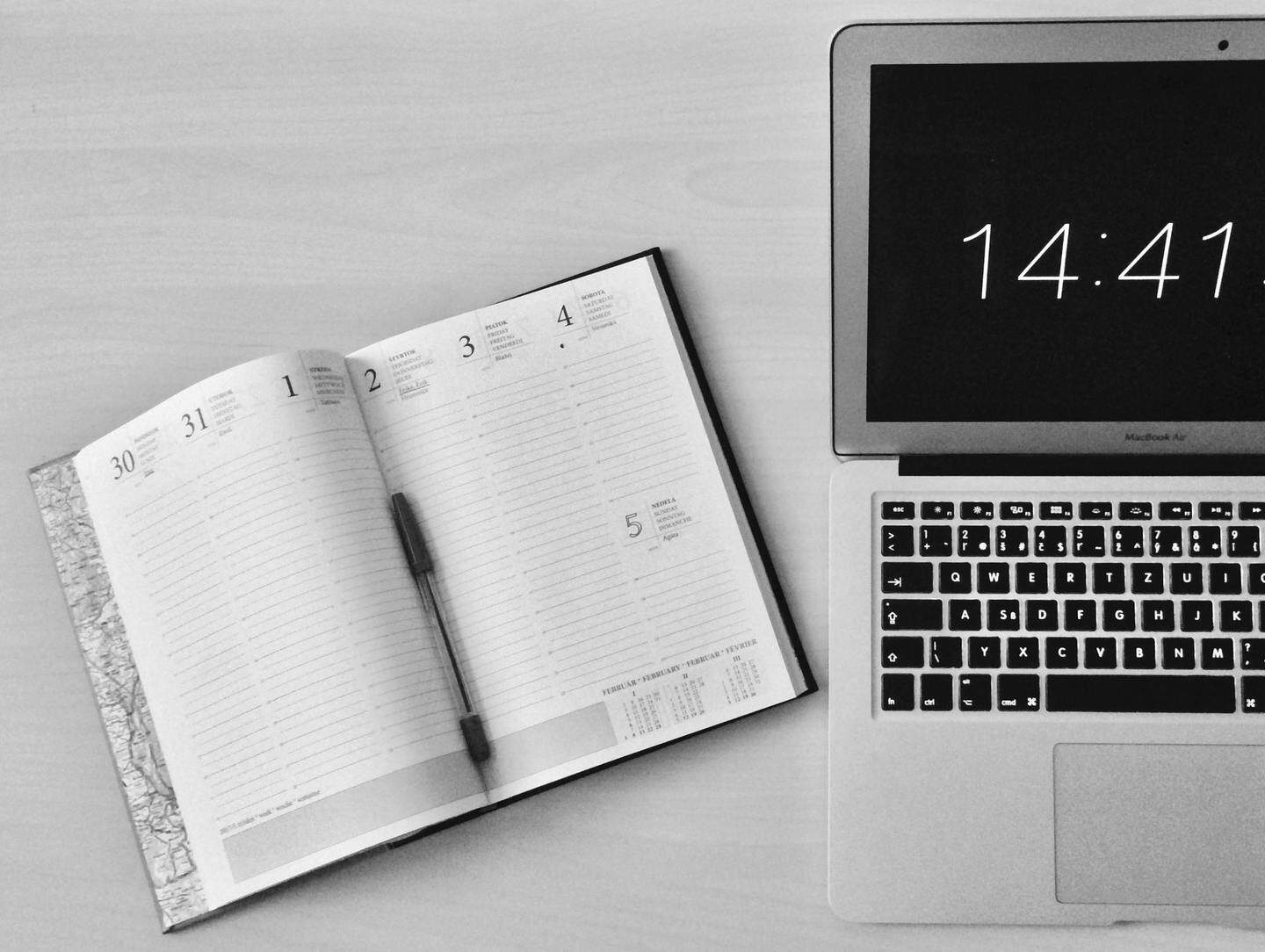I enjoy making things more efficient so I can spend less time and energy while getting more done. I focus on this mainly in my everyday life, not so much at work. Basically, I’m a life hack enthusiast. Sounds cool, right?
Life hacks aren’t just fancy buzzwords; they’re like your allies in the fight against wasting time and energy. They’re clever tricks or better ways of doing things that turn long, tedious tasks into something more manageable. Instead of reinventing the wheel, life hacks aim to simplify your life and your daily routine.
The funny thing is, when the internet became widely available, I was shocked. Turns out, I wasn’t the original creator of all the life hacks I thought I came up with. Bummer, right?
Anyway, let me share some of the life hacks I use. They’ve helped me feel less stressed and get more done. These tricks streamline my chores and give me extra time for myself.
Now, don’t expect these life hacks to be magical. They won’t transform your life overnight, but they’re small changes that add up over time. Eventually, they can make a big difference.
Of course, these hacks aren’t just for me—they can work for you too. Share them with your family! The best part is, anyone can use these ideas. Whether you’re dealing with tangled cords, a messy desk, or trying to speed up your morning routine, there’s a hack for that.
So, that’s the gist—a glimpse into how small tweaks can reshape the way we handle our busy schedules. Ready to dive in?

1. Establishing A Morning Routine
I know you’ve heard this a million times—millionaires and billionaires swear by it, and I do too. Establishing a morning routine works!
How you start your day sets the tone for how you’ll live it. And how you live your days ultimately shapes how you live your life. That’s why a solid morning routine is key to mastering your daily schedule and crushing your goals.
But what should your routine actually include? Here are some essentials:
- Wake up early (preferably before 6 AM).
- Hydrate with a glass of water right away.
- Move your body with exercise or stretches.
- Practice gratitude or spend a few minutes journaling.
- Set intentions and priorities for the day ahead.
These steps may seem basic, but you’d be surprised how many people struggle to stick to them—especially now. Distractions are everywhere! Instead of starting the day with purpose, many people grab their phones and get sucked into endless scrolling on social media. Before they know it, they’ve wasted an hour or more.
So, start simple. Train yourself to stick to a basic morning routine. Once it becomes second nature, you can build on it. Add specific tasks that align with your goals and make your mornings even more productive.
2. Prioritizing Tasks For Efficiency
Nailing down your morning routine is just the first step. Once you’ve got it down, as I mentioned, it’s time to add more structure and detail to your day. That’s where task prioritization comes in.
To stay on top of your daily grind, focus on organizing your tasks so you handle the most important ones first. Here’s a simple way to categorize your tasks:
- Centralized tasks: Your top priorities—important work that demands focus.
- Decentralized tasks: Smaller to-dos or errands that still need attention.
- Unexpected tasks: Things that pop up during the day, like urgent emails.
- Proactive tasks: Long-term projects or goals that require consistent effort.
- Low-priority tasks: Things you can skip or delegate without much impact.
This system helps you see what matters most and allocate your time and energy wisely.
For instance, block off your most productive hours—often in the morning—for centralized tasks like deep work or major projects. Save decentralized tasks, like answering emails or running errands, for the afternoon when your energy naturally dips.
The goal is to structure your day intentionally instead of reacting to every email, notification, or random task that comes your way. Prioritize what truly matters, and you’ll get more done with less stress.
3. Blocking Time
Once you’ve sorted your priorities, the next step is to block time for them. This means dividing your day into specific sections for different types of tasks. I like to break it into three main buckets:
- Must-Do Time: This covers non-negotiable tasks like work, appointments, and essential life chores (think grocery shopping or laundry).
- Should-Do Time: These are important but not urgent tasks, such as exercising, meal planning, or putting effort into a side hustle.
- Want-to-Do Time: This is for things that bring you joy—hobbies, socializing, or relaxing with your favorite shows.
The trick is to avoid letting Must-Dos and Want-to-Dos dominate your schedule, leaving no space for Should-Dos. Strive for a balance, and don’t hesitate to block time for Should-Dos, even if it means saying no to something else.
As Ho explains in his Time Flow System:
“It is not about cramming in more tasks, but identifying the right tasks to focus on at the right time. It’s about working smarter, not harder.”
If you want to start your day with a plan and practice smart prioritization, try time blocking and stick to it. This simple method could be the productivity hack you’ve been searching for.

4. Automating Repetitive Tasks
In today’s digital world, we often find ourselves glued to our computers and phones—not just for fun, but for work. And just like me, I’m sure your work often comes with mundane, repetitive tasks. These not only eat up your time but can also drain your energy.
Here’s the good news: you can hack your way out of this by using online services and AI tools to automate those tasks. With automation, you can streamline your workflow and boost productivity like never before.
The first step is to identify tasks that are perfect for automation. Common examples include:
- Scheduling meetings and appointments
- Sorting and responding to emails
- Data entry and analysis
- Social media posting and tracking
- Invoicing and expense management
Once you’ve pinpointed the areas where automation can help, Find the right tools to get the job done.
For personal use, apps like Todoist and Zapier are great for managing to-do lists and syncing apps.
For work, tools like Trello or ClickUp (project management), Slack (team communication), and Asana (task delegation) can revolutionize your workflow.
And don’t forget about virtual assistants like Siri, Alexa, and Google Assistant. With just a voice command, you can set reminders, send messages, make calls, or even manage smart devices in your home.
Why automate? According to a study by Smartsheet, automating repetitive tasks can save up to 6 hours per week—that’s almost a full workday you can reclaim for meaningful, high-impact work.
But remember, automation isn’t about removing the human touch. It’s about finding that perfect balance where technology acts as your trusty sidekick, helping you get more done with less hassle.
So, start exploring AI tools and automation today. Your future self will thank you for the extra time and freedom.
5. Breaking Down Overwhelming Projects
And we always find ourselves tackling an overwhelming projects. If you do, you need to break them down by task-grouping.
Instead of looking at the project as one giant, overwhelming task, break it down into smaller, more manageable chunks. For example, if you’re writing a book, your task groups might look like this:
- Research and outlining
- Drafting chapters
- Revising and editing
- Proofreading and formatting
- Repeat if needed

By breaking the project down into these smaller task groups, it feels a lot less daunting. Plus, you’ll get a satisfying sense of progress as you check each task group off your list.
This trick works wonders, no matter what you’re tackling—be it getting a new website off the ground, orchestrating your dream wedding, or giving your house a facelift.
The key is to make the task groups specific and actionable, so you always know what you need to work on next.
“The key is not to prioritize what’s on your schedule, but to schedule your priorities.” —Stephen Covey
So, if you start sorting your time and chunk down those big tasks into bite-sized pieces, you’re definitely on the right track to becoming a master of your schedule and knocking out your to-do list.
But don’t forget to schedule in some Want-to-Do time too—life’s too short not to enjoy yourself along the way.
6. Enhancing Your Work Environment
You know that saying about messy desks leading to messy minds? And you know what? There’s a good chunk of truth in that statement. So, if you’re aiming to boost your productivity, it’s a good idea to start by clearing the clutter from your workspace.
Now, let me give you a few pointers that might come in handy:
- Keep things tidy by going through your desk, drawers, and shelves regularly and getting rid of stuff you don’t need.
- Try going digital whenever you can. Scan your documents and store them on your computer instead of keeping piles of paper.
- Invest in some desk organizers like trays, file holders, and pen holders to keep everything neat and easy to find.
- Label everything so you always know where things belong.
- Take a few minutes at the end of each day to tidy up your desk, so you start fresh the next morning.
Stick with these suggestions, and you’ll notice your focus sharpening while knocking tasks off your to-do list faster than ever before. Plus, let’s be honest, a clean desk just looks nicer and can give you a sense of calm in the midst of a busy day.
7. Becoming More Efficient In Cleaning
A tidy home is just as important as a clutter-free workspace. This makes moving around your space as easy as pie. While owning a commercial space can boost your productivity and customer service skills, let’s not forget about the sanctuary of our own homes.
Did you know, on average, people spend 300 hours a year cleaning? But with some smart strategies, like cleaning as you go and using efficient tools, you can slash that time in half.
Let’s be honest, cleaning might not top your list of fun activities, but it definitely doesn’t need to eat up all your time. So, let’s dive into making things quick and efficient:
- First things first, gather all your cleaning supplies beforehand to avoid constant trips back and forth.
- Start cleaning from the top, tackling high surfaces first and decluttering as you move along.
- Prioritize high-traffic areas like the kitchen and bathroom.
- While waiting for things to soak or dry, multitask to maximize your time.
- Set a timer for 15–20 minutes and challenge yourself to see how much you can accomplish in that time frame.
With these simple tricks up your sleeve, keeping your space neat and tidy won’t mean kissing all your free time goodbye. So, roll up your sleeves, put on your favorite playlist, and dive into cleaning with a smile!
Follow these tips, and you’ll soon find yourself with extra time to kick back and relax on your spotless couch.
8. Applying The Pareto Principle
So, let’s dive straight in and explore how the Pareto Principle can spice up your everyday life. Imagine if you could pinpoint which 20% of your efforts are giving you 80% of your happiness or success? Putting this principle to work for you could be the game-changer you’re looking for.
It’s about sifting through the noise to focus on what truly matters—those golden nuggets that make a big difference in our day-to-day hustle.
This powerful concept states that roughly 80% of effects come from 20% of causes. In other words, a small number of inputs are responsible for most outputs.
So how can you apply this to your daily life and work-life balance?

First, take a step back and analyze how you’re spending your time. Chances are, you’ll find that a small number of activities are delivering the most value and results.
Maybe it’s those focused hours of deep work in the morning, or that weekly planning session that sets you up for success. Whatever it is, identify those high-impact tasks and prioritize them ruthlessly.
On the flip side, you’ll likely discover that a lot of your time is being eaten up by low-value activities, such as endless email checking, social media scrolling, or unproductive meetings.
So, the game plan here is to really cut down or totally kick those time-wasters to the curb as much as we can. Delegate, automate, or simply say no to the things that aren’t moving the needle.
By focusing your energy on the 20% that matters most, you’ll be amazed at how much more you can accomplish in less time. So there you have it, that’s the golden ticket to finding a perfect balance in life.
But don’t just take my word for it. Highly successful people like Warren Buffett and Bill Gates swear by the 80/20 rule. They ruthlessly prioritize their time and attention on the things that deliver the greatest impact.
So start practicing the Pareto Principle in your own life. Identify your 20% activities and double down on them. Say no to the rest.
Let’s get one thing straight: the secret isn’t in pushing yourself harder but rather in finding smarter ways to tackle your work. And when you master the art of 80/20 living, you’ll be well on your way to a more balanced, productive, and fulfilling life.
9. Establishing Healthy Boundaries
If you want to achieve a true work life balance, setting boundaries is non-negotiable. Without clear limits, it’s all too easy for work to bleed into your personal life and vice versa.
Setting boundaries is easier said than done. It can be uncomfortable, awkward, and downright scary at times. But honestly, having this skill isn’t just a nice bonus; it’s downright vital for feeling your best and nailing success.
So where do you start?
- Get crystal clear on what your boundaries are. What are your non-negotiables when it comes to your time, energy, and personal space? Maybe it’s not checking email after 6 PM, or not taking work calls on weekends. Maybe it’s saying no to social invitations that drain you, or carving out non-negotiable “me time” each day.
- Whatever your boundaries are, communicate them clearly and confidently. Don’t apologize or over-explain. A simple “I’m not available for calls on weekends” or “I don’t check email after work hours” will do.
- Of course, there will be times when your boundaries are pushed or challenged. That’s the moment when you need to dig your heels in and make sure those rules are followed every single time. If a coworker repeatedly ignores your “no calls on weekends” policy, address it directly. Remind them of your boundary and the reasons behind it. If a friend keeps pressuring you to go out when you need alone time, be honest about your needs.
Remember, setting boundaries isn’t selfish—it’s a form of self-care and self-respect. When you protect your time and energy, you’re better able to show up fully in all areas of your life.
But boundaries aren’t just about saying no—they’re also about saying yes to the things that truly matter. When you’re not overextended or stretched too thin, you have the bandwidth to invest in your passions, relationships, and personal growth.

So start setting those boundaries and watch your work-life balance transform. It may be uncomfortable initially, but with practice and consistency, it’ll become second nature.
And who knows—you may inspire others to do the same. When we all respect each other’s boundaries, everyone wins.
FAQs
While I already told you most of my life hacks, you might have some questions in mind. Hopefully, this sections answer them for you.
How to make or discover your very own life hacks?
The best way to come up with life hacks is to start with what frustrates you. For me, it all began when I was juggling huge projects in college. Back then, without the internet, I had to think creatively to make my life easier.
Often, I’d adopt a “lazy” mindset—asking myself, How can I get this big task done with minimal effort in the shortest time possible? With this approach, I stumbled upon my own life hacks. Of course, if you actually feel lazy, you must follow some of these hacks to overcome laziness.
Keep thinking in terms of solving your own problems, and you’ll start finding creative solutions that work for you.
What or who is the origin of life hacks?
Well, it’s definitely not me! When I came up with my own life hacks, I just called them productivity tips. The term “life hack” actually originated in 2004 during a tech conference. It was coined by Danny O’Brien, a well-known tech writer at the time.
What is the need to develop life hacks?
At the core, life hacks are about speeding up everyday tasks so you have more time for what truly makes you happy. Think of them as your secret weapon for cutting through life’s clutter and smoothing out the bumps along the way.
They’re like having a tiny helper that saves you precious minutes, lowers stress, and helps your day flow better.
If you’re looking to save time, reduce stress, and breeze through your daily to-dos, life hacks are the little shortcuts that make life a whole lot easier.
Conclusion
So, wrapping things up, when we talk about life hacks, it’s not just about cutting corners or saving a few minutes here and there. It’s really about making room for the good stuff—more laughter, creativity, achievements, and family vacations, whether that’s at home or hustling at work.
We’re all about finding ways to make everyday tasks smoother and simpler. So, whether we’re talking about setting up a solid plan for creating content or tackling those big, scary projects piece by piece, each strategy helps build the foundation for success. It shines a light on how thoughtful planning beats just working hard any day.
Good luck to us!






